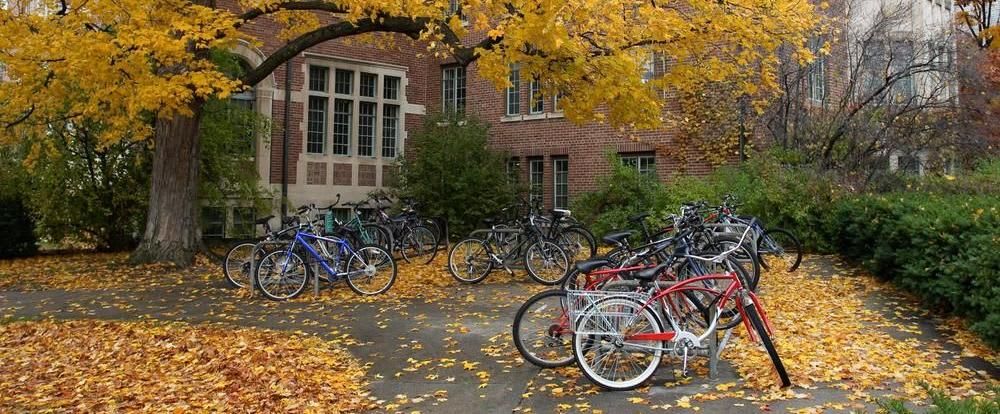What College Students Need to Know about the Opioid Crisis
The economic toll of the opioid epidemic in the US skyrocketed to more than $1 trillion between 2001 and 2017. Meanwhile, more than 62,000 Americans fatally overdosed from opioid use in 2017 alone. While college life is often thought of as an idyllic bubble, the reality is that opioid use can and does penetrate campus life. Here’s a closer look at the issue, along with how students can do their part in the war on opioids.
- Education
- Student Tips
- International News

The economic toll of the opioid epidemic in the US skyrocketed to more than $1 trillion between 2001 and 2017, according to a recently released report from health research and consulting institute Altarum. Meanwhile, more than 62,000 Americans fatally overdosed from opioid use in 2017 alone.
While college life is often thought of as an idyllic bubble, the reality is that opioid use can and does penetrate campus life. Here’s a closer look at the issue, along with how students can do their part in the war on opioids.
Bursting the Bubble
When we hear the words “opioid crisis,” college students may not immediately come to mind. However, just because you don’t see it, doesn’t mean it’s not happening. In fact, according to findings published in a Wall Street Journal article on the problem with opioids on college campuses, college students are just as likely as other demographics to abuse these dangerous narcotics. Not only that, but there’s been a “rapid and unrelenting rise of deaths among 15-to-24-year-olds tied to heroin and synthetic opioids.”
However, because federal law doesn’t currently require colleges to report non-criminal drug deaths, the severity of the situation may be well-hidden. As Dr. Joseph Lee, medical director for the Hazelden Betty Ford Foundation Youth Continuum, told NBC News, “This is a time when young adults have more access to substances than ever before and have more economic leverage and legal protections. I wonder if [college] administrators take it as seriously as they need to when it’s not on the map.”
Indeed, much of the spotlight has been focused on teen opioid use -- which makes sense, to a degree, given that this is where substance use often begins, and that the highest risk groups of these users don’t make it to college or quickly drop out. But others do go onto college, but others begin “experimenting” during the university years. Continued Lee, “When you put it together, you find a rather nuanced message that doesn’t downplay the seriousness, but shows why colleges are not seeing it.”
Even worse? Limited help is available for college students who do become addicts. “It’s a travesty. [University administrations] will support a house party, but very few put forth resources for people with mental health and addiction problems. It’s very sad. Students get mixed messages from college administrators, who are not on fire to do something about opioids,” said Lee.
Joining the Fight
In declaring education as a priority in fighting opioid abuse, Health and Human Services Secretary Tom Price said in a press briefing, “The problem is very complicated, and currently we’re on the losing side of this war. We know this involves public health, the medical community, health-care delivery system, law enforcement, education, local and statewide elected officials, devastated families, and those in treatment and recovery.”
Many colleges are starting to implement strategies of their own aimed at supporting students in a variety of ways, including everything from education programming to substance-free housing and activity options.
But this doesn’t mean college students themselves can’t make a difference. In fact, they’re uniquely positioned to do so. For starters, you can find out if campus police at your school carry Narcan, a drug which reverses opioid overdoses in minutes. If not, consider writing a letter to your school’s administration to request that they consider adopting
Kimberley Timpf, senior director of prevention education at prescription-drug safety and addiction-prevention company EverFi, told Inside Higher Ed, “The majority of students are not abusing or misusing prescription drugs.As part of a community … we hope that [students] will stand up, will recognize, will step in if you see a friend who is struggling.”
Advises Odyssey, “If you notice someone demonstrating concerning behaviors that could be linked to a drug dependency, say something. If you're close enough, tell them directly that you're concerned for their well-being. If you're not comfortable directly telling them, tell your Resident Assistants if you live on campus or a counselor at your campus health center. If you think you or your friend has developed a dependency, go to your campus health center, they can help you. If you do not have access to a campus health clinic, there are many other ways to receive treatment like primary care physicians and local drug abuse treatment centers.”
Furthermore, never share your prescription painkillers, and keep them in a protected space. One rule of thumb proposed by Odyssey? “If if has your name on the bottle, you should be the only one using it.”
Perhaps the problem of opioids on campus is no better embodied than by the tragic story of wealthy Ivy League student Gage Billetto, who died in his dorm room of a suspected opioid overdose less than two months ago. While his parents knew he’d dabbled with drugs and alcohol during high school, they had no idea of the extent of the problem. Said his father, “It was way way worse than we had ever imagined. It often isn’t what you see that’s deadly. It’s what you don’t see.”
The takeaway for students, families, colleges and communities? Fighting a threat we can’t see is a losing battle. However, by shining a light on this deadly issue -- and by acknowleding the pivotal roles we each can play -- we can come together to defeat it.

Joanna Hughes
Author
Joanna worked in higher education administration for many years at a leading research institution before becoming a full-time freelance writer. She lives in the beautiful White Mountains region of New Hampshire with her family.
Find a program in these categories
Read related articles

Are International Students Immigrants? The Debate Explained

Six Things All International Students Should Do Before Traveling
